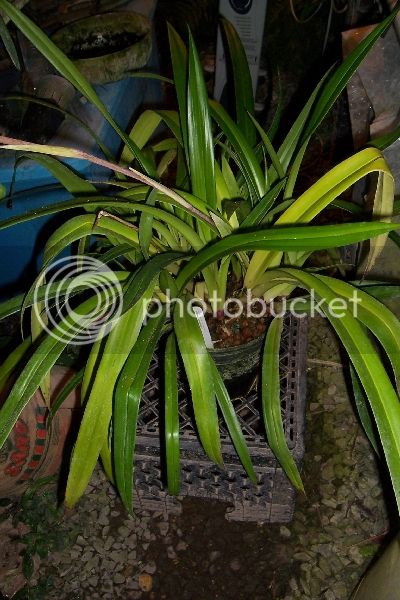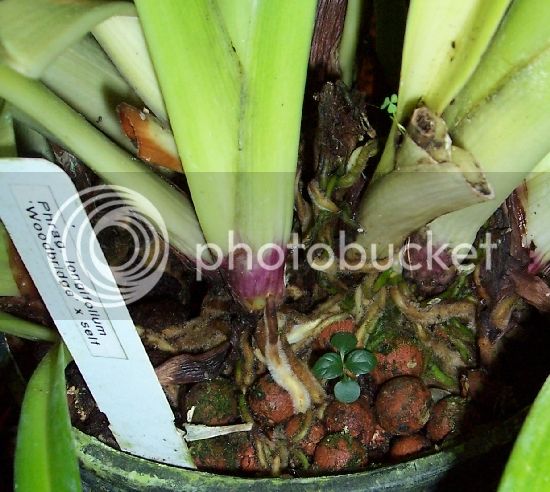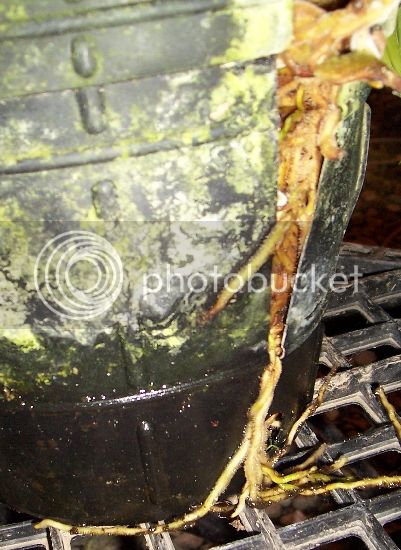Rick
Well-Known Member
I will receive my EC/TDS meter on Thursday, I will see my fertilizers and will ask some questions, if it is not problem.
No problem, but might to start a different thread so its not all chemistry.

I will receive my EC/TDS meter on Thursday, I will see my fertilizers and will ask some questions, if it is not problem.
I hate to ask but; how did this go from a question of biology to chemistry? I think we need to look at the actions and affects to our orchids on a wholistic level.
I was wondering the same thing! Only you have the balls to ask!oke:
So I just laid down 4 posts with links and contacts for holistic approach and you have no commentoke:
Thanks, Rick...and our own Olaf Gruss translated it into German for Die Orchidee!
Still lots of epiphytic plants get huge with no more than 20ppm of salts coming there way in the rain water.
But we must consider that the humus from the moss- leaves - bark has a tremendous surface area and negtively charged so its capable of holding lots of cations And anions comming its way and have them constantly avaiable to the epiphyte. Take the same plant and try growing it in solid stones and I doubt you would see much growth at all with 20ppm.
But yes some orchids and bromeliads in particular seem to have an unbelievably efficent nutrient gathering capacity!
Yes it gets fed at about 50ppm N once a week (less in winter) which has a conductivity of 300 - 500 us/cm, but the top ups and flush are with water less than 50 us/cm. This morning the sump was empty (the day after fertilizing too) so I just added enough water to fill the sump without flushing. This evening I let all the dregs from the pot drip into the sump and the conductivity is 160us/cm.
Firstly,very nice plant! You don't need to change anything there!
I think that its very important that when we are are talking Pour Through EC, that we should all stick to the standard procedure. That is: (2 hours after normal irrigation), slowly pour through (close to 0 dS/m EC or maybe up to 100 us/cm?) water to finish with 50 ml. and take a reading. If we all do it differently we'll never know what the hell is going on:rollhappy:
This morning I fed all my paphs with EC 0.3 dS/m solution. 2 hours later I checked ec and could not get anything over 0.1! Thats the ec of my rain water! So whats going on? (BTW I checked 6 pots) The only thing that comes to mind is either nitrogen drawdown by bacteria (but 2 hours??) or that the bark has held on to cations thus reducing water EC.
One of the reasons I suspected that an EC of 0.3 was too low, is the fact that the mix I'm using is very course, very hard and has very little suface area and NO humus or moss so it souldn't be able to hold much in the way of anything! A good watering should really flush out much of the nutrient?
So I went back and refed everything again with 0.5 (about 50ppm N) And I will recheck EC later.
If you have moss in your mix I think you need to worry much less about fert and pH.
How about 80ppm!



I've had this Phrag longifolium (also found in the Country of Origin for Selenipedium species) since about 2005. It's in the same 8" pot full of hydroton balls that it came in, but recently the pot split and roots are pouring out of the side. The pot sits in a tray of water (when not being photographed), but normally it just sucks up the water every few days so I add enough to overflow the tray to flush, and wait till its all gone for the refill.
Longest leaves are about 20", and the plant has been in continuous bud/bloom for about 2 years now. You can see some moss growing on the balls (along with weeds) and roots are obviously healthy, plenty of new growth and virtually no leaf tip burn. This would probably count as a big leafy plant.
I thought the plant was awesome before K lite, but with reduced K the leaves are about 20% longer than before, and leaf tip burn was drastically reduced.
Yes it gets fed at about 50ppm N once a week (less in winter) which has a conductivity of 300 - 500 us/cm, but the top ups and flush are with water less than 50 us/cm. This morning the sump was empty (the day after fertilizing too) so I just added enough water to fill the sump without flushing. This evening I let all the dregs from the pot drip into the sump and the conductivity is 160us/cm.
So I think you can grow great plants from Ecuador without high TDS. Judging by the improvement in quality over the last 2 years it also looks like less is more.
You should do the 50ml test on this plant the day before feeding (if you don't flush) and we will have a good idea how much nutrient it (and any flora in the pot) is eating per week.
Another quick question, When you made up your Klite, did you increase the proportion on N at the same time or just remove K?. If not, each 1/4 teaspoon is giving you higher P/N, S/N, ratios as well as everything else compared to the the regular MSU right? In other words, what was the P/N (%P divided by % N) ratio in MSU? and what is it in Klite?
Rick, looking at your plant I have another question:
plant is great, wery well cultivated, there in no doubt about it. As I can see do you use only anorganic clay as media?
You should do the 50ml test on this plant the day before feeding (if you don't flush) and we will have a good idea how much nutrient it (and any flora in the pot) is eating per week.
Another quick question, When you made up your Klite, did you increase the proportion on N at the same time or just remove K?. If not, each 1/4 teaspoon is giving you higher P/N, S/N, ratios as well as everything else compared to the the regular MSU right? In other words, what was the P/N (%P divided by % N) ratio in MSU? and what is it in Klite?
Klite is 12-1-1 10Ca 3mg
The old MSU pure water is 13-3-15 8Ca 2Mg
So P/N and K/N and ratios to Ca and Mg are all changed.
The trace metals composition of K lite is the same as for MSU
48 hours later (this morning) the sump water is still only 160 us/cm. So no significant material has transfered in/out of the media.
So I just laid down 4 posts with links and contacts for holistic approach and you have no commentoke:
Enter your email address to join: